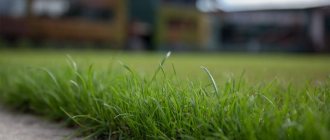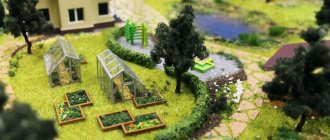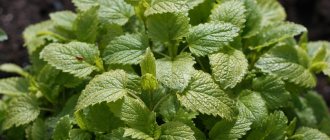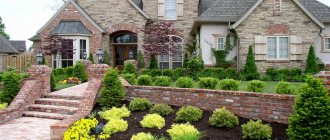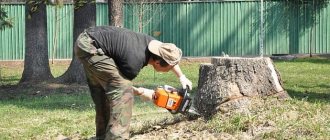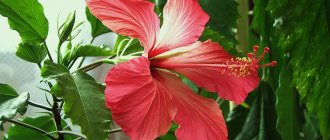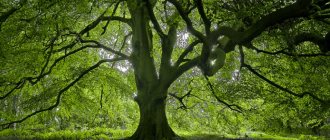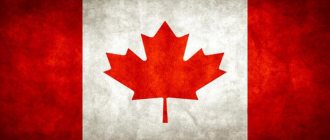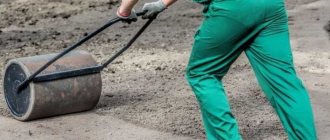A sports facility or football field, recreation area or playground in a country house requires a wear-resistant, weather-resistant coating.
Modern technologies used in the production of artificial turf allow it not only to meet all these requirements, but also to be almost identical in appearance to natural grass.
The advantages of synthetic greens also include the speed with which you can acquire your own lawn and the opportunity to save money if you install the covering yourself.
Of course, it is better to trust any work to professionals. If you decide to do without the help of specialists, then you need to carefully understand what the technology for laying artificial grass consists of.
Even if installing artificial grass with your own hands is not part of your plans, understanding the process of how this should happen will be useful to you if you simply need to decide what kind of covering to purchase. After all, the installation method depends on the type of artificial turf. This means possible associated additional costs for the purchase of all necessary materials.
Types of artificial grass by type of installation
Artificial grass is sold in rolls, ranging from 1.8 m to 4 m wide. Laying artificial grass will have its own characteristics, depending on which type you purchase:
- non-backfilling;
- half-fill;
- backfill;
Non-fill (decorative) - a type of lawn for which no filler is required. It looks almost natural, but just as quickly loses its attractiveness with intensive use.
It is usually used for laying artificial grass where increased load on the surface is not expected: on alpine hills, to give a well-groomed appearance to cemetery areas, to implement various ideas of landscape designers.
Semi-fill or combined turf - to increase its wear resistance, the spaces between the fibers are filled with quartz sand. Used on children's playgrounds, tennis courts, and landscape design.
The backfill (special) type is laid using a large amount of filler. It is used to create football fields and other sports facilities. Quartz sand and rubber granules as bedding prevent slipping on the grass and minimize the consequences of falls.
Rules for caring for landscape grass
Artificial grass for decoration and landscape is quite easy to use and maintain.
If the coating is outdoors, it can be washed with water from a hose once a week (more often or less often, depending on your desire). If the grass is indoors, dust can be collected with a wet cloth or mop.
It is advisable to brush artificial grass surfaces indoors or outdoors from time to time with a plastic or rubber brush. Collect large debris by hand.
If you want to buy artificial grass, you should pay attention to its quality. High quality landscape grass will last about 7-10 years, or even longer, and will still look natural and natural. Low quality artificial turf will last in good condition for a maximum of 1 to 3 years.
Laying a non-fill lawn
The technology for laying a non-fill lawn is extremely simple and consists of the following:
- Clearing the area of large debris (glass, stones, branches) and leveling the soil.
- Compacting the soil with a special roller or a suitable means at hand (a heavy pipe of suitable diameter, a barrel, etc.)
- If necessary, if there is a possibility of seasonal flooding of the site, it is necessary to make drainage or create a slight slope of the ground for water drainage. The role of drainage can be performed by a ditch dug along the perimeter of the lawn and filled with crushed stone.
- Cut the rolled material to the size you require.
- Laying artificial grass on the ground.
- If necessary, gluing parts of the artificial lawn together (more details about this process will be discussed below).
What kind of foundation should there be on a sports ground?
The following requirements apply to laying artificial grass on an outdoor sports field:
- the base must be without obvious irregularities, bulges, holes, cracks, voids;
- for laying grass, the base is made with an elevation in the center and a smooth decrease towards the edges. The height ranges from 0.4-0.6%. The height difference between the center of the base and its edges is about 25-40mm;
- the base for artificial grass must be dry;
- It is necessary to create a drainage system to remove moisture.
Laying semi-fill and infill lawns
These types of lawns require intensive use and are used, among other things, for children's playgrounds and sports grounds and therefore require careful adherence to installation technology.
Miscalculations can lead not only to a reduction in the service life of the coating, but also to injuries.
Just as when installing a non-fill lawn, you need to start with careful preparation of the base.
Photo of laying artificial turf
Read here Instructions on how to fertilize the soil - soil preparation, types and rules for using fertilizers (video + 100 photos)
Did you like the article?
0
Artificial turf base
To achieve a high-quality result, it is necessary that the soil is dry during preparation of the base. The air temperature should be about 10 degrees Celsius or higher. The required weather for work is without precipitation.
The choice of the optimal method of preparing the base from the possible options depends on the following factors:
a) the purpose for which the future lawn is intended;
b) the intensity of the upcoming load on the coating;
c) the type of soil that is supposed to be used as a foundation;
d) your financial and technological capabilities;
In the event that you need to lay artificial grass for a medium-intensity use of the future artificial lawn, you can handle the preparation of the base yourself, without the involvement of professionals and special equipment.
After clearing the area of large debris and leveling the area, it is necessary to make more reliable drainage from crushed stone than in the case of an unfilled lawn.
To do this, you need to excavate the soil to a depth of about 50 cm and lay a geotextile backing. Its task is to prevent soil from mixing with artificial grass and increase the service life of the surface.
Rolls of substrate should be laid overlapping and secured with staples. Along the perimeter, the canvas should extend beyond the base by 15 - 20 cm.
After this, a layer of sand is laid, followed by coarse crushed stone, then fine crushed stone. All layers are carefully compacted.
If there is a possibility of flooding the site due to too intense precipitation, or due to a high groundwater level, it is necessary to lay drainage pipes at a depth of 50 cm along the bottom of the excavation.
The type of soil is one of the important factors influencing the process of preparing the base for artificial turf. Therefore, those who take on this work for the first time may have a question: how to lay a coating on sand?
As a rule, manufacturers do not recommend doing this at all, because sandy soil is unstable. It is necessary to remove the surface layer of sand, thoroughly compact the soil, and only then begin further work on installing the coating.
If you use concrete as a base, you need to make a slight slope for water drainage and before laying artificial grass, lay a special 1 cm thick asphalt backing or foam rubber mats. This will reduce the abrasion of the lawn and extend its service life. In addition, the substrate will act as a shock absorber. Before pouring concrete, it is also necessary to prepare drainage layers of sand and crushed stone.
As for the preparation of the base for laying infill lawns used as football fields in stadiums, in this case the laying of complex drainage systems with pipelines and trays for collecting water is required.
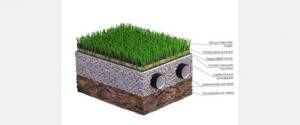
Artificial grass laying technology
How to choose and buy artificial grass? You can learn from the following articles, but for now, check out the company’s catalog and “Services.” We have artificial grass, which you can buy from stock in a warehouse in Moscow.
Preparing the base.
Before starting work on laying artificial grass, it is necessary to prepare a crushed stone base. When preparing the base, it is important to follow the entire technological process, because a poorly made foundation can subsequently lead to soil subsidence.
The construction of the base always begins with excavation of the soil (a “trough” device) for inert materials (sand, crushed stone screenings) to a depth of 50-60 cm over the entire area where artificial grass is laid. Next, inert materials are backfilled in layers (in accordance with the project): the space is filled with sand, then crushed stone fr. 40-70 mm, crushed stone fr. 20-40 mm, crushed stone fr. 5-20 mm and granite screenings. Each layer must be well compacted with a vibrating roller. If necessary, you can create a base slope from the center of the field to the perimeter and install a linear drainage system to drain rain and melt water. The angle of inclination depends on the terrain.
After preparing the base, you can begin work on laying artificial grass. To achieve a high-quality result, you must follow the rules: the base must be dry, the weather must be dry and warm, the average daily temperature must not be lower than 10 degrees Celsius.
Trimming and joining grass.
It is necessary to roll out a roll of grass on the field according to the artificial grass installation plan. During installation, the edges of the rolls are laid on top of each other with an overlap of 15-30 mm to obtain even joints when cutting grass. In this state, artificial grass should lie for about a day (at least 10 hours), this helps to get rid of the internal tension that results from long-term storage in a roll. After this, you need to trim each roll so that the rolls fit end to end, using specialized equipment.
Gluing the canvas
Gluing the covering sheets must begin after trimming the edges. This will prevent deformation due to daily temperature changes. You also need to make sure that all the rolled out rolls lie flat, there are no bumps or folds on the surface, and the edges of the rolled out grass are adjacent to each other closely. For gluing, polyurethane glue (two-component) and a special seam tape are used. Typically, the standard tape width is 30 cm. The adhesive is applied with a width of 20 - 25 cm. The average consumption of the composition is 350-450 g/l.m. To gluing, unfold the edges of the canvases and roll out the seam tape so that the joint is located in the middle of the tape. The glue is applied to the tape with a notched trowel. The edges of the artificial grass rolls are then carefully lowered onto the belt and rolled using a roller.
Marking
Marking is done in 2 ways: 1. Applying markings with polyurethane paint. This method is more economical, but such markings will last no more than 3-5 years. 2. Marking insert which is the same artificial grass, only white. This marking method is more labor-intensive, but the color obtained at the factory will last the entire life of the field. Markings are applied only after the artificial turf has been completely glued.
To install a marking line, you need to cut strips of the required width inside the field with a special cutter with a double blade, then unfold the edges of the sheets, roll out the seam tape, apply glue to the connecting tape with a notched trowel, and carefully lay the marking line.
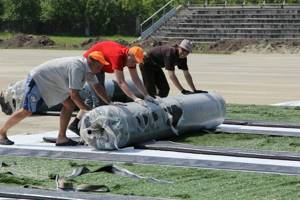
Backfilling with sand
The artificial lawn is backfilled with quartz sand with a fraction of 0.3-0.6 mm exclusively in dry weather. For backfilling, special mechanisms or improvised devices are used. It is required to evenly distribute quartz sand on the lawn in accordance with the sand consumption rate per 1 sq.m. The amount of sand depends on the height of the artificial grass pile. Then you need to comb the lawn so that the sand can settle inside the artificial turf.
Filling with rubber granules
The final stage when laying artificial turf is filling it with rubber crumbs. For this, rubber granules with a fraction of 1-3 mm are used. After finishing filling, comb the lawn again to shrink the rubber granules.
Artificial grass installation should be left to professionals with consistent installation practices and high quality material suppliers. At the Russian Polymer company you can order the laying of artificial grass, as well as buy related materials: artificial grass, quartz sand for preparing the base, polyurethane glue.
Trimming and joining grass
Rolls of artificial grass need to be rolled out, observing the direction of the blades of grass, and laid so that the material rests for 12-24 hours. If the lawn fibers are directed in different directions, its color may be uneven.
Artificial turf is laid end-to-end or overlapped by 1.5-3 cm if the edges are uneven. Precision cutting using a utility knife and a metal ruler is necessary to achieve an ideal joint. It should not exceed 1mm.
All material is cut in the same way according to the required size of the site or lawn.
Gluing the canvas
Once you are sure that the lawn fabric lies flat and has no defects in the form of swellings or bumps, you can begin gluing the parts together.
To glue parts of the lawn together, special connecting tapes (sutures), about 30 cm wide, and polyurethane glue are used.
The tape is placed under the edges of adjacent parts, glue is applied to it with a notched trowel, the edges of the sheets are lowered, and the seams are pressed with a roller or heavy pipe of a suitable diameter.
The work should be done carefully, avoiding getting glue on the lawn fibers.
If the lawn area is large, it is advisable to additionally secure the seams with staples.
Marking
If the artificial turf will be used as a sports ground, then markings will be necessary. This can be done in two ways:
— painting;
- “inset”;
The first option is more economical and easier to implement, but less durable. Such markings, applied with polyurethane paint, will last from 3 to 5 years.
The second option is more labor-intensive, but the service life of such markings is equal to the service life of the site itself. It involves inserting markings made of the same artificial grass, only white.
To install the ribbon, strips of the required thickness are cut from white blades of grass on a green field. Then a connecting tape is placed under the resulting edges of the lawn, polyurethane glue is applied to it, and the edges of the lawn and the white marking insert are carefully placed, avoiding the glue getting on the fibers. Everything is pressed carefully.
Backfilling of the coating
Work on filling the lawn with quartz sand and rubber crumbs should be done in dry weather. The algorithm of actions is as follows:
1. Dry sand, with a fraction of no more than 0.6 mm, is applied manually or with specially equipped machines to the surface of the lawn and evenly distributed, “combed” with rakes or brooms so that it ends up “at the bottom” of the covering.
2. The lawn is covered with rubber granules ranging in size from 1 to 2.5 mm, which, just like in the case of sand, are evenly distributed over the surface. Rubber crumbs come not only black, but also colored. It costs more.
3. At the end of the installation process, it is recommended to water the lawn.
Artificial turf: type, structure
Artificial grass in rolls makes installation much easier and has the same structure as natural lawn. The material was developed in such a way that it retains elasticity and the product does not deform due to various weather conditions.
- Polyethylene and polypropylene fibers are extruded from extruders This process results in artificial stems that closely resemble natural grass. They are attached to a special base. At the same time, the coating itself can have different thickness, thickness, and length.
- In general, artificial grass has fibers that are a minimum of 6 mm and a maximum of 1 cm . Some companies have the same bristles, but despite this, each product has its own distinctive features.
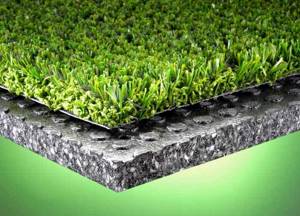
Conventionally, artificial turf according to the laying method is divided into the following categories:
- Unfilled lawn . Aesthetically, this type of lawn is considered the most beautiful. It is as close as possible to the natural prototype. It is not recommended to walk on this lawn so as not to spoil the appearance of the product. The lawn is used primarily for decorative purposes. The main advantage of this type of lawn is the following: it is not necessary to use quartz sand for refilling.
- Semi-fill lawn . It is these types of coatings that can most often be seen on sports and children's playgrounds. Also used in summer cottages. The coating is ideal for these conditions. The lawn has soft polyethylene fiber, softens bruises during a fall. If you install such a covering, then you need to take into account an important nuance - in order for the lawn to last longer and be reliable, you must use quartz sand. It is poured into the gaps between the fibers.
- Infill lawn. This species is considered special. It is most often used for laying on a football field. During installation, the spaces between the fibers are filled with rubber granules mixed with quartz sand. Such a lawn can protect many athletes from complex injuries.
Artificial turf care
Caring for artificial grass will not require as much time and money as natural grass. However, compliance with proper operating conditions will increase the life of the lawn and maintain its aesthetic appearance.
Artificial turf care measures include:
- removing large debris (especially glass and stones) with nylon brushes or garden vacuum cleaners;
- periodic washing with a hose and removing dirt;
- if necessary and desired, disinfection can be carried out (on lawns where children and animals walk);
- once a season it will be necessary to update the backfill;
- It is advisable to make punctures in the lawn once every two weeks to avoid water accumulation and rotting;
- removing weeds that have sprouted on the sand;
- moistening during hot dry periods to increase the adhesion of the lawn to the soil;
If any seam ruptures that occur are repaired in a timely manner and operating conditions are observed, artificial lawn grass will last for many years, maintaining its functional and decorative properties.
How to lay artificial grass in your garden
In summer cottages, laying a lawn is a particularly painstaking process. This is due to preliminary soil preparation. Also, under such conditions, it becomes more difficult to calculate the required shape and number of rolls.
It all happens as follows:
- The base is being prepared. That is, the earth is cleared of all weeds and debris. If there is such a possibility, then it should be leveled, however, this does not always happen. In addition, it is important to keep the soil dry and clean. If there is sand in the yard, then it is better not to lay a lawn on it, since there is a high risk of deformation.
- To prevent water from accumulating under the artificial carpet, it is necessary to additionally drain the liquid from the surface. Manufacturers usually take this into account when making a lawn, but in a summer cottage it is impossible to do without an additional drainage layer. It is made from fine-grained screenings or crushed stone.
- After the surface and drainage layer are prepared, they begin to roll out the rolls and lay the carpets end to end. When they are rolled out, they must be left for at least a day to straighten and take on a new shape. Uneven edges of rolls must be trimmed.
- Lying grass carpets are fixed with fastening materials.
- Unlike previous lawn laying technologies, it is strongly recommended to secure the edges with a mounting stapler.
Potatoes Bryansk delicacy variety description, photos, reviews
